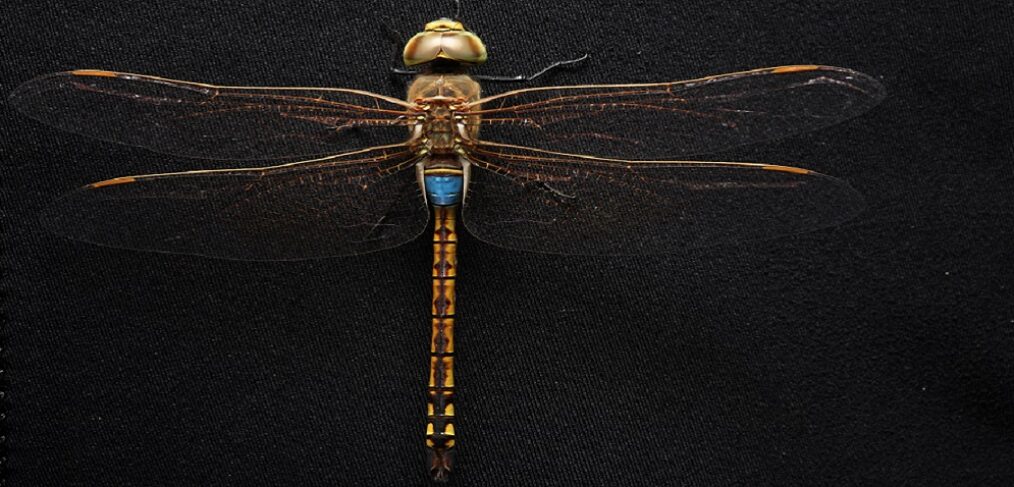
species of the week #48-vagrant emperor
Once in a lifetime, to see a vagrant emperor is like winning the lottery here in Northern Europe. In Germany, there is only one known body of water in Saxony where the vagrant emperor has been able to successfully reproduce. Otherwise, the vagrant emperor is unfortunately only a guest in Germany. In 2019, there was an influx from the south in many places in Germany and the Netherlands. The dragonflies then come to the water body, lay their eggs and disappear again. 2-3 months later the offspring hatch, stay at the water body for a few days and then fly south again. More frequent observations are in the Canary Islands.
| Distribution status | Extinct in Rhineland-Palatinate |
| Remaining deposits | Saxony, Southern Europe, Africa |
| Last sighting in Rhineland-Palatinate | unknown |
| Habitat | floodplain landscapes |
| Threat | River straightening, insecticides |
The wingspan of the pied damselfly is between 9.5 to 10.5 cm, but the body length is only 6 to 6.6 cm, comparatively short. The eye color is greenish-brown, the second abdominal segment is continuous and bright blue in the male, and interrupted by a longitudinal black line and pale blue in the female. On the upper side of the segment a “shabracke”, i.e. a blue transverse band, can be seen. In females this feature may be absent altogether.
The Schabracke’s damselfly primarily inhabits shallow and temporary waters (flood waters), which dry up to a large extent towards the end of the season.
When the winds are favorable, the Sable damselfly flies from Africa to Iceland. It looks very similar to the damselfly, the best way to distinguish the two is by their eye color. The damselfly has green eyes and the damselfly has greenish-brown eyes. With its very large eyes, it can still hunt at dusk. The Brown Darter is a pure flight hunter and feeds on smaller insects. Even at 37°C it can still hunt, while other dragonflies then already have to protect themselves from the sun.
If it is warm enough, the larva hatches after only 100 days. In Germany, however, it needs two to four months until it is fully developed and reaches a body length of 42 to 44 mm. The pied damselfly can form two to three generations per year. In Africa it flies all year round. .
Policy Need:
– Protection and renaturation of floodplain landscapes.
– Ban on pesticides and insecticides in protected areas
– Renaturation of water bodies
Image: By Alexander Vasenin – Own work, CC BY-SA 3.0, https://commons.wikimedia.org/w/index.php?curid=32903001
